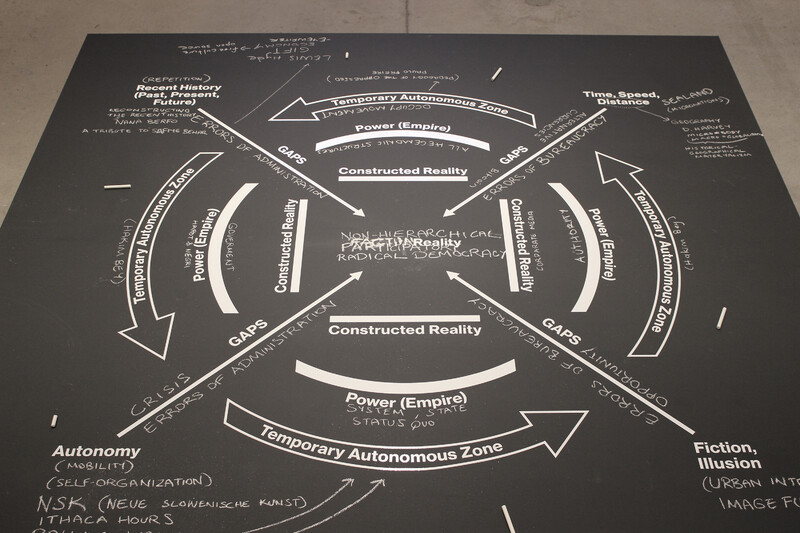
Public space is a key concept of contemporary art and politics. However we repeatedly mean different things when we use these words and it often seems as if the concept itself is insufficiently precise. A square is a public space, but what about heavily controlled spaces such as Tiananmen Square in Beijing, or Red Square in Moscow, where spontaneous public gatherings are forbidden? A mall is a public space that may provide essential and necessary space for gathering and community services, but it is privately owned and policed. These contradictions abound in public spaces, so much so, that we should begin to understand these spaces as constitutively paradoxical. Any concrete public space, insofar as it is constitutive of publics, is necessarily a discursive space. In fact, what makes it public is the disagreement that we have over the meaning of the space itself. This is why theories of public space are important to physical public spaces, because a public space is constructed both through physical material operations, and through the abstract theories and ideologies that conflict in its design, construction and ongoing use.
Blackwell will discuss a sequence of his urban art works that explore the paradox of public spaces. The talk will present these projects alongside a sequence of diagrams illustrating the philosophical, political and urban concepts that inform them, using the concept of topology to express the relationship between virtual diagrams and actual spaces.
Presented in conjunction with the class Activism in Visual and Media Culture (VCC308H5S) in the program of Visual Culture and Communication in the Department of Visual Studies.
Circles, spheres, spirals and knots: paradoxical topologies of public space
Presented alongside the exhibition Ahmet Öğüt: Strategies for Radical Democracy, January 15 – March 2, 2014. Curated by Rhonda Corvese.
- Presenter
- Adrian Blackwell
Blackwell’s research focuses on the intertwined problems of public space and private property. Publications include: “Forms of Enclosure in the Instant Modernization of Shenzhen” in Volume and “What is Property?” in the Journal of Architectural Education. He has been a visiting professor at Harvard University’s Graduate School of Design and is an Assistant Professor at the University of Waterloo School of Architecture. He was a member of Toronto’s Anarchist Free School and the Toronto School of Creativity and Inquiry, and is an editor of the journal Scapegoat: Architecture / Landscape / Political Economy.


The Blackwood
University of Toronto Mississauga
3359 Mississauga Road
Mississauga, ON L5L 1C6
[email protected]
(905) 828-3789
The galleries are currently closed.
Facebook | Twitter | Instagram
Sign up to receive our newsletter.
The Blackwood is situated on the Territory of the Mississaugas of the Credit, Seneca, and Huron-Wendat.